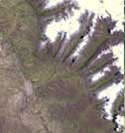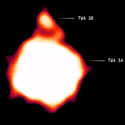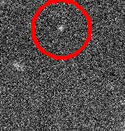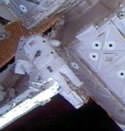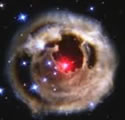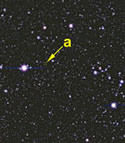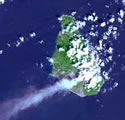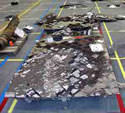
Image credit: NASA
The Columbia Accident Investigation Board, the group attempting to determine what destroyed the space shuttle Columbia in February, released some preliminary recommendations for NASA to prevent future shuttle accidents. They recommended increased inspections of several shuttle components as well as taking images of the shuttles while they’re in orbit by various space-based cameras to detect any damage.
Houston, Texas — The Columbia Accident Investigation Board today issued two preliminary recommendations to NASA. Additionally, the Board issued several facts regarding the shuttle program.
Recommendation One: Prior to return to flight, NASA should develop and implement a comprehensive inspection plan to determine the structural integrity of all Reinforce Carbon-Carbon (RCC) system components. This inspection plan should take advantage of advanced non-destructive inspection technology.
This recommendation was issued because of the board’s finding that current inspection techniques are not adequate to assess structural integrity of RCC, supporting structure, and attaching hardware.
Recommendation Two: Prior to return to flight, NASA should modify its Memorandum of Agreement with National Imagery and Mapping Agency (NIMA) to make on-orbit imaging for each Shuttle flight a standard requirement.
This recommendation was issued because of the board’s finding that the full capabilities of the United States Government to image the Shuttle on orbit were not utilized.
Facts Regarding RCC Components — The board will include the following facts in its final report:
* The Reinforced Carbon-Carbon (RCC) system (including all RCC, supporting structure and attaching hardware) is an essential component of the Space Shuttle Orbiter Thermal Protection System (TPS) and has a Criticality Rating of 1 (loss of crew – loss of vehicle).
* The RCC composite consists of a reinforced carbon-carbon substrate that carries the structural loads, a tetraethyl orthosilicate impregnation that reduces inherent substrate porosity, a silicon carbide treatment that protects the substrate from oxidation, and a sealant coating that provides additional oxidation protection. These composite structures are attached to the shuttle by a metal support system.
* During initial manufacturing acceptance, the integrity of production composites used in the RCC system is checked at various points in production by physical tap, ultrasonic, radiographic, eddy current, weight gain, and visual tests. In addition, a flat plate control panel made in parallel with the production piece is destructively tested at various points in the production process.
* A projected design mission life has been established for each RCC component. These projections are based on analysis correlated to simulated flight load testing, and assume the presence of sound composite material and metal support structure.
* Visual external inspections and tactile checks are the only specified post flight inspections of RCC composite components. The planned interval for removing RCC composite components for more thorough inspection is typically many flights, unless their removal is dictated by an observed visual surface condition or necessitated by the requirement to provide access for other operations.
* Non-destructive testing of some post-flight RCC components has shown indications of RCC material defects not previously identified by visual inspection methods currently employed.
Facts Regarding Shuttle Imaging — The board will include the following facts in its final report:
* The U.S. Government has the capability to image the Shuttle on orbit.
* A Memorandum of Agreement exists between NASA and NIMA regarding on-orbit imaging of the Shuttle.
* During the flight of STS-107, there were no on-orbit images taken of sufficient resolution to assess the Orbiter’s condition.
The CAIB issued these recommendations and findings in advance of their appearance in the final report. The board’s final report will be issued later this summer. It will include the probable cause of the accident, contributing factors, findings and additional recommendations.
Original Source: CAIB News Release

